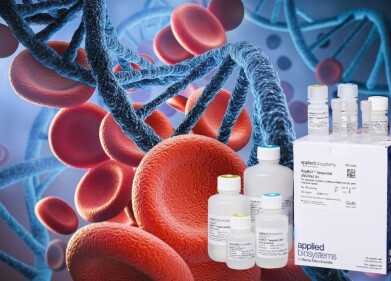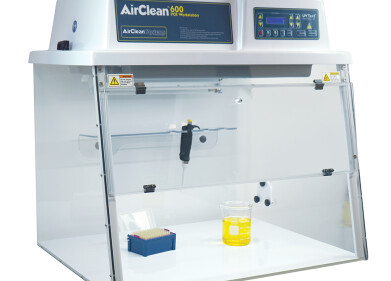DNA / RNA
8 Advances in Forensic Science
Aug 16 2022
From solving missing persons cases to tracking down offenders, forensic science is the backbone of criminal investigations. The field is continually growing and evolving, with advances in forensic science always pushing the limits of what’s possible in the lab. Below, we spotlight some of the latest techniques and technologies transforming the face of forensic science.
The origins of forensic science
Forensic science isn’t a new concept. In fact, the ancient Greeks and Romans were some of the first to use forensic science to solve murder cases. Specifically, research in pharmacology allowed these ancient civilisations to understand more about how toxins and poisons affect biological systems. This knowledge was used to investigate suspicious fatalities, determine the cause of death and ideally, identify the killer.
Autopsies can also be traced back to ancient times. Antistius, a Roman physician and personal doctor to Julius Caesar, performed an autopsy on the Roman dictator in 44 BC. He concluded that while Caesar was stabbed more than 20 times, the cause of death was a single wound to the chest. Today, autopsies are the most effective way to determine the cause of death, particularly under suspicious circumstances.
A timeline of forensic science milestones
Forensic science continued to advance throughout the Middle Ages. In the 1600s the University of Leipzig in Germany officially launched a course in forensic medicine. Later in the century, Italian physician Marcello Malpighi was once of the first to recognise the uniquity of fingerprint patterns.
Spanish chemist Mathieu Orfila, credited as the Father of Toxicology, published one of the first textbooks on the scientific discipline in the early 1800s. Swiss physician Friedrich Miescher made a huge breakthrough in 1869 when he isolated nucleic acid and discovered DNA. These kinds of innovations laid the groundwork for some of the modern forensic science milestones listed below:
1932 - The FBI establishes a dedicated forensic science laboratory.
1971 - American forensic anthropologist William Bass helps set up the Body Farm at the University of Tennessee in Knoxville. To this day, the scientific research facility relies on donated bodies to study the decomposition of human remains and advance modern forensic science.
1984 - British geneticist Sir Alec Jeffreys develops a game-changing genetic fingerprinting technique.
1992 - American biochemist Kary Mullis helps invent the first polymerase chain reaction (PCR) testing method.
1998 - The United States launches the National DNA Index System (NDIS).
A new era of forensic science
Today, forensic scientists rely on next-generation techniques and technologies like automation to solve cases and fight crime. Read on to find out more about some of the most exciting innovations and how they’re raising the bar for modern forensic science.
-
DNA Phenotyping
DNA fragments extracted from hair, body fluids and tissue can be incredibly useful in forensic science. However, if the owner isn’t registered in a database, turning DNA into useful information can be a challenge. This is where DNA phenotyping steps up. The field uses complex genetic information derived from genotyping or DNA sequencing to predict physical and biochemical traits. These can include characteristics such as sex, face shape and hair and eye colour. Some of the latest DNA phenotyping techniques can predict skin colour, though the ethics surrounding this are complicated.
-
Biosensors for forensic analysis
Biosensors - analytical devices that measure bioaffinity-based reactions - have become an invaluable tool for forensic science. In a recent study published in the journal Sensors, the authors explore the use of biosensors for forensic analysis. They explain how advances in biosensor technology have allowed forensic scientists to carry out metabolite analysis using bodily fluids such as blood and sweat. As well as providing reliable and accurate data about the origins of bodily fluids, biosensor analysis bypasses the major backlogs often associated with DNA analysis.
“The use of biosensors in forensics enables investigators to have another source of information in addition to DNA analysis that also provides worthwhile information quickly for them to narrow down their investigation in a timely manner,” write the authors. “These advances with biosensors in the field of forensics have produced a viable way for investigators to receive some information to pursue leads if DNA evidence is backlogged or not applicable using sweat and blood evidence found at the crime scene.”
Biosensors are also used for fingerprint analysis, with amino acid assays used to determine biological sex. Metabolic differences caused by gender, age, health and lifestyle are revealed in biosensor fingerprint analysis and help investigators narrow down suspects.
“By analysing these types of biomarkers in a fingerprint sample, it would not only allow for one to gain much needed information that would provide additional context for investigators, but would also lead to the reduction in the need to wait for the lengthy analysis of DNA that causes a backlog, if any was recovered,” reads the Sensors article.
-
Isotope Detection
From bullets to bomb debris, isotope analysis is used by forensic investigators to trace the origins of explosives. The technique is based on the fact that most powerful explosives contain carbon, oxygen, nitrogen and hydrogen atoms. Comparing isotopes can be a useful way to analyse explosives and track the source of origin.
-
Forensic Palynology
Proving a connection between a person and a crime scene or object is often critical to building legal cases. Forensic palynology uses pollen grains and spores to establish links and help prove if a person is guilty or innocent. From tracking the origins of illegal drugs such as cocaine and fentanyl to linking offenders to incriminating objects, palynology has a myriad of applications in forensic science.
-
Carbon Dating
Carbon dating is based on the idea that all living organisms absorb atmospheric and radioactive carbon - also known as carbon-14 - as they age. Organisms stop absorbing atmospheric carbon when they die, though carbon-14 accumulated over their lifetime continues to deteriorate. Analysing carbon-14 in human remains is a useful way to determine when a person died and their age at the time.
Over the past decade an increase in fossil fuel emissions has emerged as a unique challenge for carbon dating, with experts warning concentrations of carbon isotopes in the atmosphere are reaching unusually high levels. This could compromise the accuracy of carbon dating techniques.
-
DNA Sequencing
New advances in DNA sequencing have allowed forensic scientists to solve “cold cases” in countries around the world. In Australia, forensic experts recently used DNA sequencing to identify the mysterious Somerton Man, who was found on an Adelaide beach in the 1940s. He was discovered dressed in a suit and tie, with no personal ID. Rumours quickly started to emerge he was a spy or an undercover agent.
More than 70 years later, University of Adelaide professor Derek Abbott has solved the case using next-generation DNA sequencing. Together with American forensic scientist Colleen Fitzpatrick, Abbott used DNA sequencing to construct a family tree and identify thousands of possible relatives. While the cause of death remains a mystery, Abbot and Fitzpatrick were able to identify the Somerton Man as an electrical engineer named Carl Webb.
“It's like a sudoku puzzle with 4,000 elements. It was huge," Abbott revealed in an interview. “Basically, there were just two people in there with no dates of death." Using DNA sequencing, Abbot and Fitzpatrick were able to match the Somerton Man with maternal and paternal relatives, then identify the individual as Carl Webb. "It turns out he's our man because it all fits," says Abbott.
-
Forensic Glass Analysis with LA-ICP-MS
Crime scenes are often littered with inorganic elements such as glass fragments and fabric fibres. Laser ablation inductively coupled plasma mass spectroscopy (LA-ICP-MS) has emerged as a valuable tool to analyse evidence and detect elemental and isotope variations in solid materials. The most advanced instruments can detect variations at the part per billion (ppb) level, making LA-ICP-MS a highly sensitive and accurate forensic analysis tool.
The technique uses a laser beam to remove tiny particles from the sample. These particles are then processed and ionised using inductively coupled plasma-mass-spectrometry (ICP-MS). Once the excited ions have been isolated, a mass spectrometer is used to evaluate elemental and isotopic characteristics.
LA-ICP-MS is especially useful for glass analysis. When analysing glass from car windows or headlights, LA-ICP-MS can be used to pinpoint the make, model and even year of production. The procedure is fast and accurate, making it a mainstay in forensic labs.
-
Immunochromatography
Body fluids are often invaluable evidence for forensic scientists. Immunochromatographic strip tests allow scientists to examine biological stains and uncover valuable information about the origins of the fluid. The latest generation of immunochromatographic strip tests can simultaneously detect up to five body fluids. This eliminates the need for multiple tests and allows scientists to carry out multiple tests on a single sample. An article published in the peer-reviewed journal Toxicologie Analytique et Clinique explores how immunochromatography is used to detect methamphetamine in urine-based forensic drug tests.
Want to know more about how chromatography is being used to fight crime? We cover some of the latest techniques, including micellar electro kinetic capillary chromatography (MEKC) used to isolate ionic dyes in inks and detect explosive residues, in ‘What Are the Recent Trends in Chromatography?’
Digital Edition
Lab Asia 32.2 April
April 2025
Chromatography Articles - Effects of small deviations in flow rate on GPC/SEC results Mass Spectrometry & Spectroscopy Articles - Waiting for the present to catch up to the future: A bette...
View all digital editions
Events
Apr 22 2025 Hammamet, Tunisia
Apr 22 2025 Kintex, South Korea
Analytica Anacon India & IndiaLabExpo
Apr 23 2025 Mumbai, India
Apr 23 2025 Moscow, Russia
Apr 24 2025 Istanbul, Turkey



















